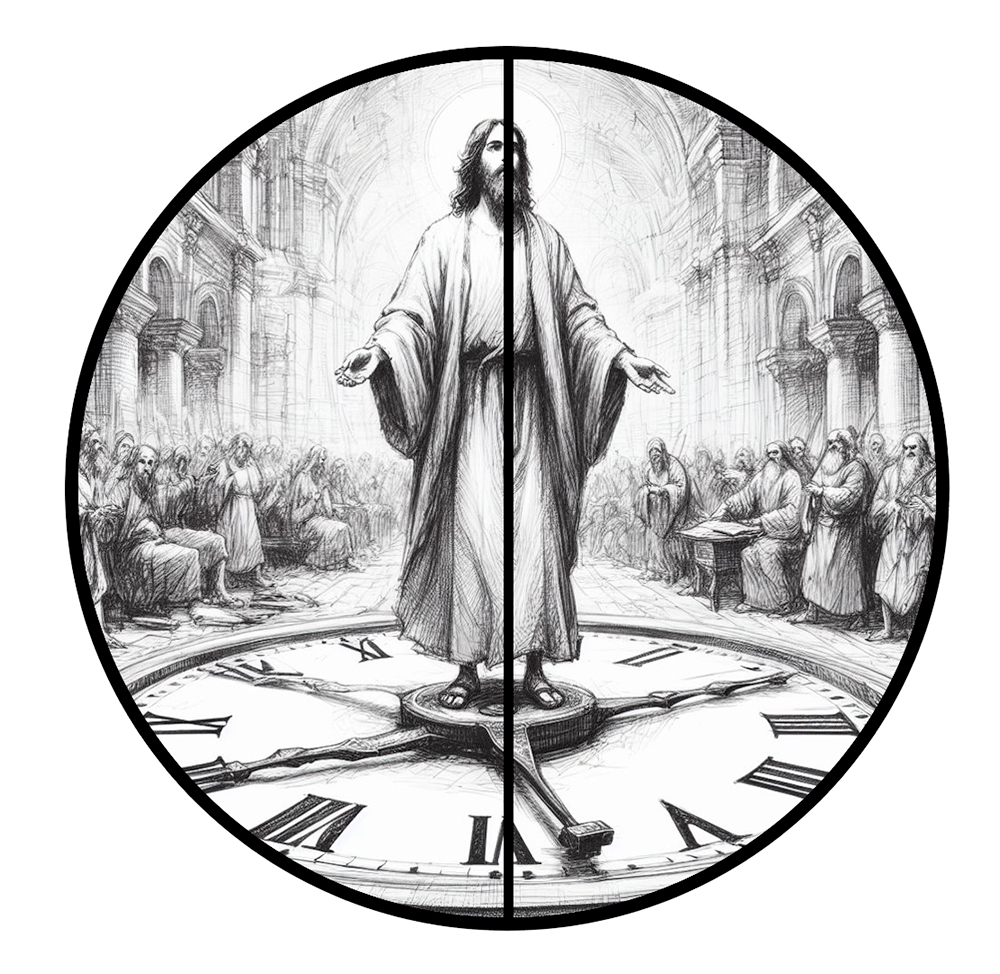Chapter 1
 John 1:35
John 1:35

Τῇ ἐπαύριον πάλιν εἱστήκει ὁ Ἰωάννης, καὶ ἐκ τῶν μαθητῶν αὐτοῦ δύο·
RBT Greek Interlinear:
|
Strongs 3588
[list] Λογεῖον Perseus Tē Τῇ the Art-DFS |
|
Strongs 1887
[list] Λογεῖον Perseus epaurion ἐπαύριον next day Adv |
|
Strongs 3825
[list] Λογεῖον Perseus palin πάλιν back Adv |
|
Strongs 2476
[list] Λογεῖον Perseus heistēkei εἱστήκει stood ready V-LIA-3S |
|
Strongs 3588
[list] Λογεῖον Perseus ho ὁ the Art-NMS |
|
Strongs 2491
[list] Λογεῖον Perseus Iōannēs Ἰωάννης Favored N-NMS |
|
Strongs 2532
[list] Λογεῖον Perseus kai καὶ and Conj |
|
Strongs 1537
[list] Λογεῖον Perseus ek ἐκ from out Prep |
|
Strongs 3588
[list] Λογεῖον Perseus tōn τῶν the Art-GMP |
|
Strongs 3101
[list] Λογεῖον Perseus mathētōn μαθητῶν learners N-GMP |
|
Strongs 846
[list] Λογεῖον Perseus autou αὐτοῦ himself PPro-GM3S |
|
Strongs 1417
[list] Λογεῖον Perseus dyo δύο two Adj-NMP |
RBT Hebrew Literal:
Doubled- Standing Firm on Tomorrow, Today
On the Tomorrow the Favored had stood ready backwards,55b and from out of the Learners of Himself, two.
Yesterday | Today | Tomorrow
Standing firm, upright. "Those who walk" are those selves comprehended in time and who can only see what is directly in front of them. Standing firm in the center of time means a timeless state, seeing all from beginning to end.
Standing firm, upright. "Those who walk" are those selves comprehended in time and who can only see what is directly in front of them. Standing firm in the center of time means a timeless state, seeing all from beginning to end.
The dual man of heaven stands firm and walks at the same time, this means looking at what is directly in front of yourself and also at what is coming at the end.
Julia Smith Literal 1876 Translation:
Again on the morrow John stood, and two of his disciples;
Again on the morrow John stood, and two of his disciples;
LITV Translation:
Again on the morrow, and two from his disciples stood.
Again on the morrow, and two from his disciples stood.
ESV Translation:
The next day again John was standing with two of his disciples,
The next day again John was standing with two of his disciples,
Footnotes
| 55b | εἱστήκει he had stood. εἱστήκει is in the pluperfect indicative active. Without the understanding of eternity, translators force the semantics here into the constraints of time and place, thus the translations are incorrect, and miss the intention. |